
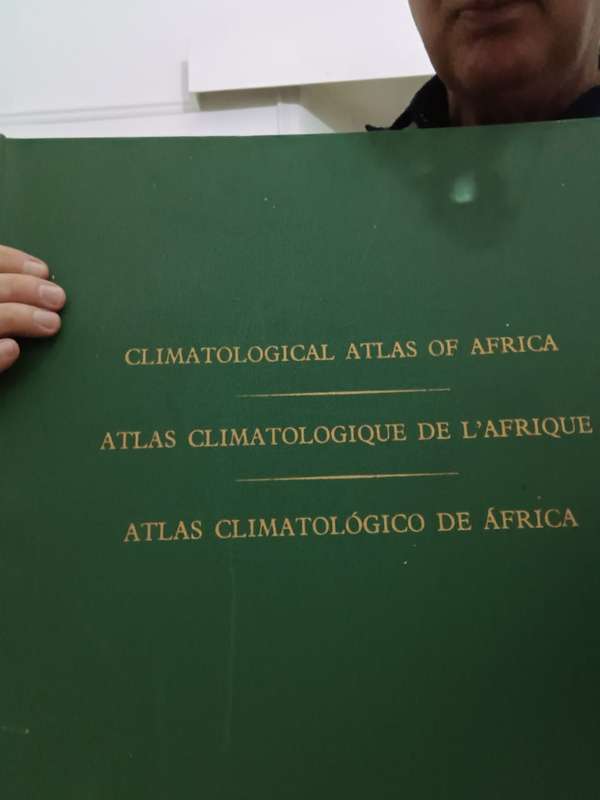
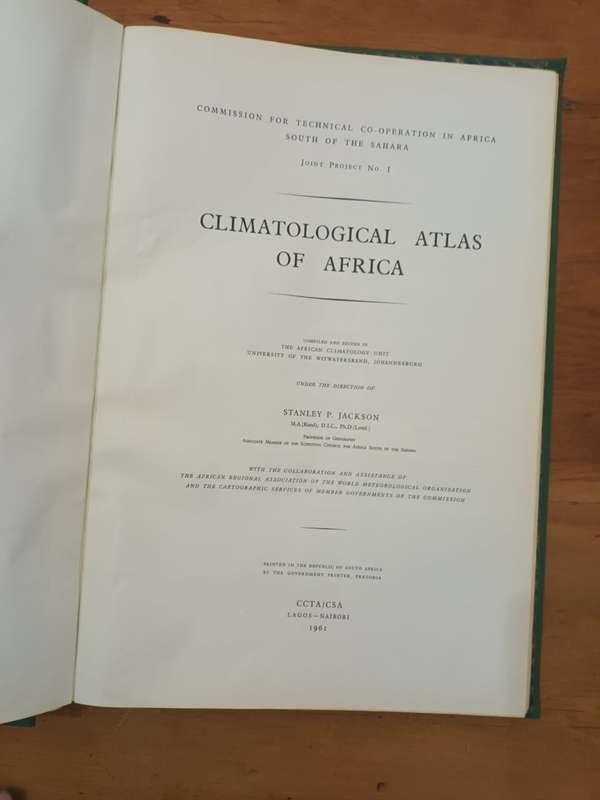
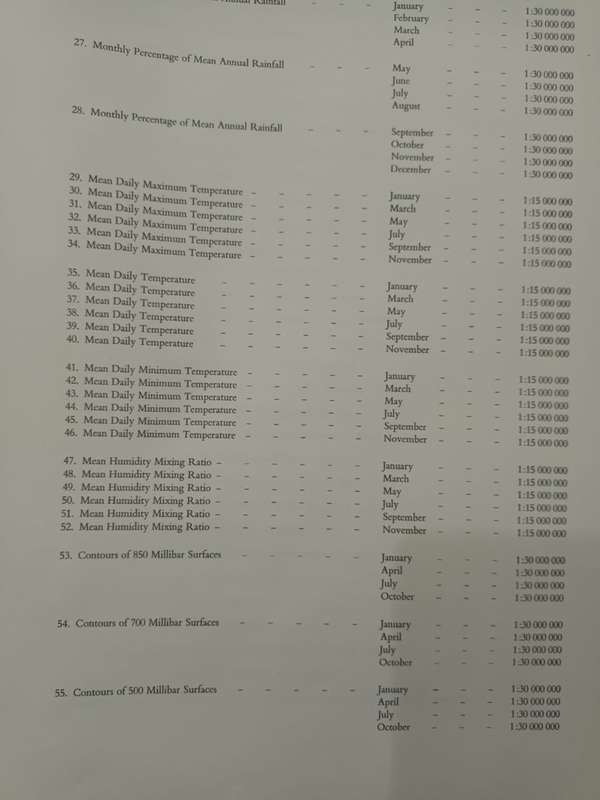
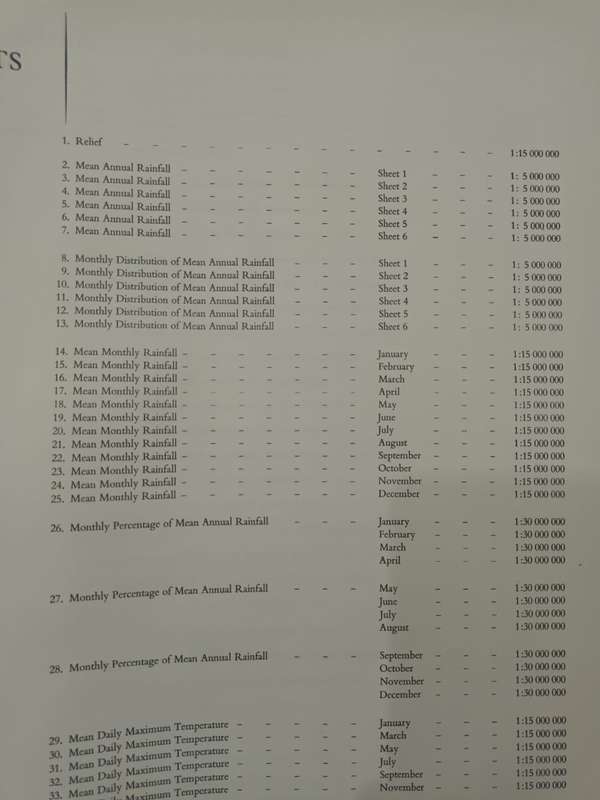
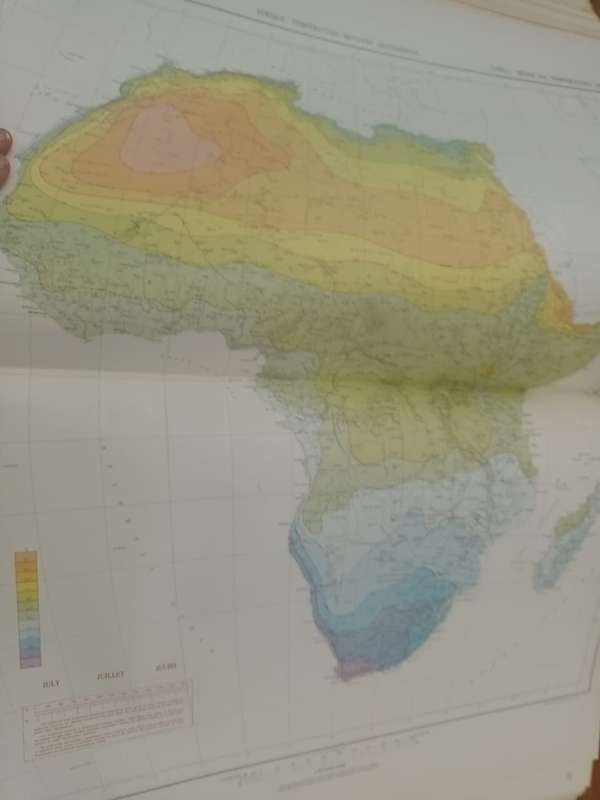
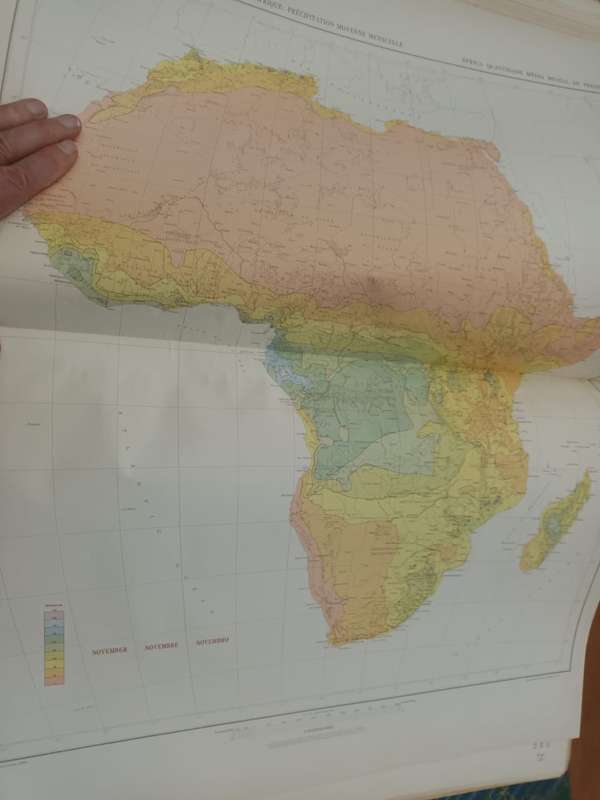
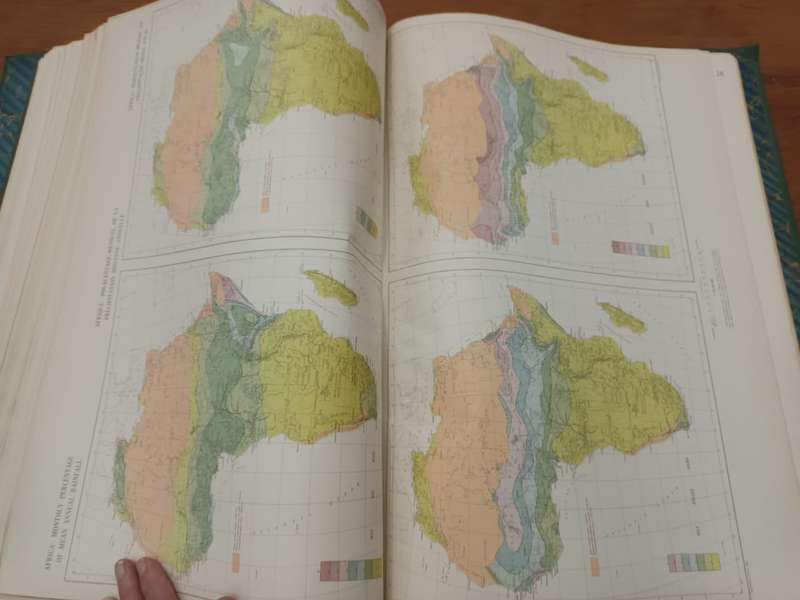
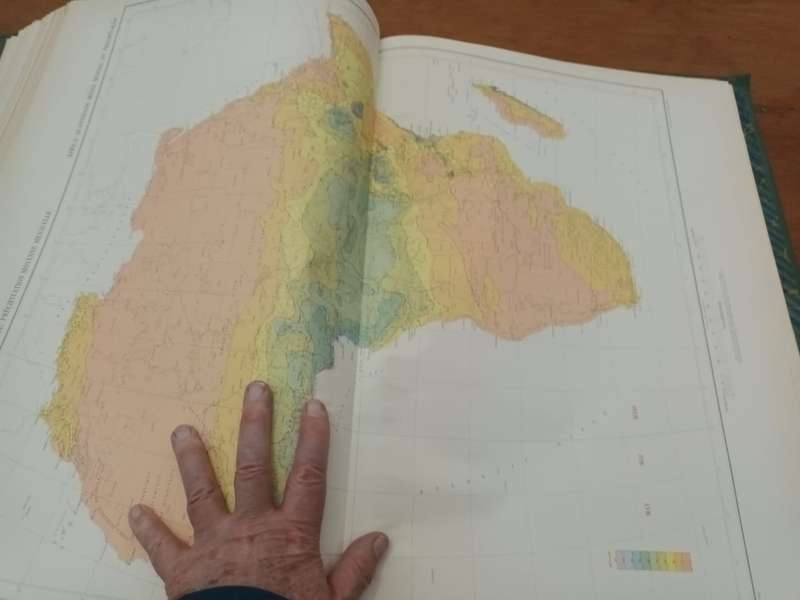
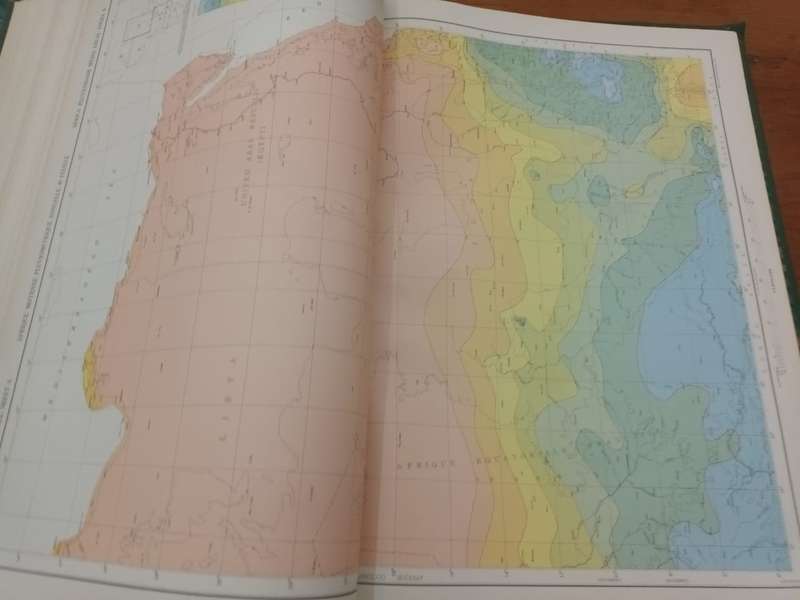
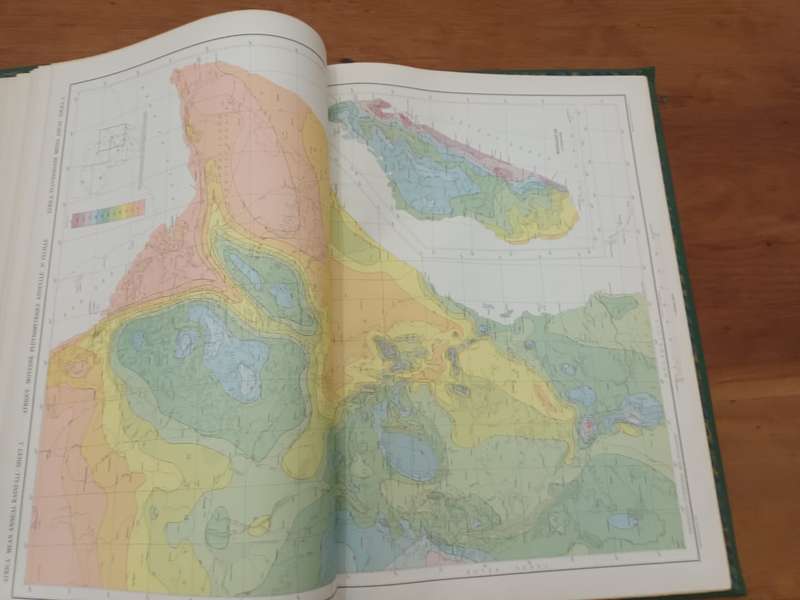
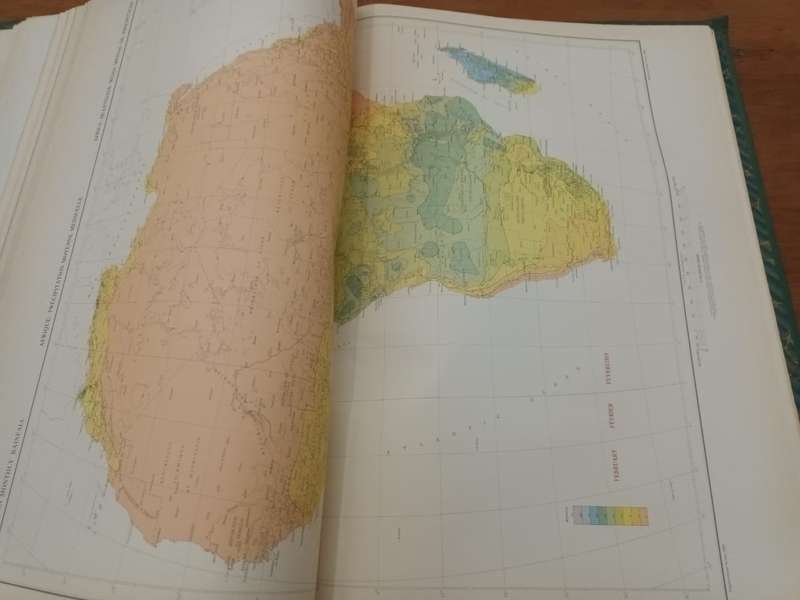
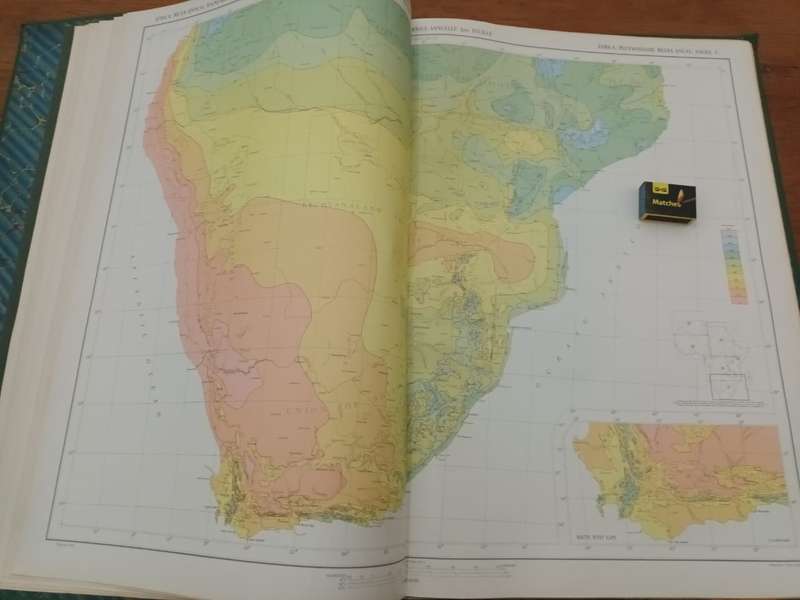
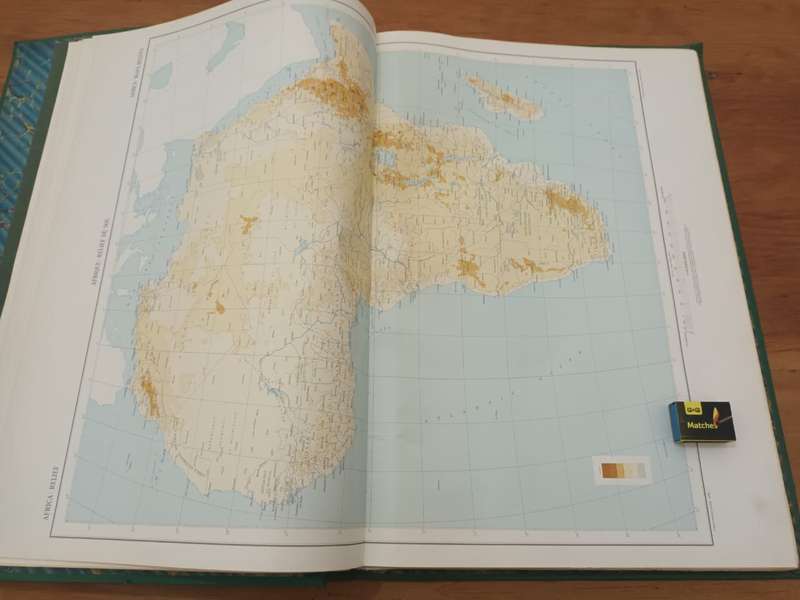
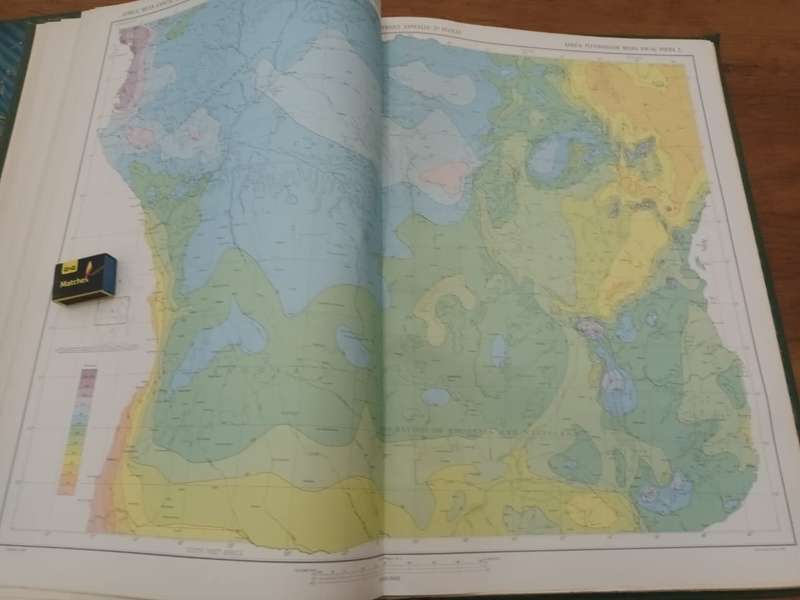





Climatological Atlas of Africa. Huge elephant folio, 1961. Scarce.
Check my rate
| Main centres: | 1-3 business days |
| Regional areas: | 3-4 business days |
| Remote areas: | 3-5 business days |




















| Main centres: | 1-3 business days |
| Regional areas: | 3-4 business days |
| Remote areas: | 3-5 business days |
Stanley P. Jackson, and others, Climatological Atlas of Africa. Compiled and Edited in the African Climatology Unit, University of the Witwatersrand, Johannesburg, Under the Direction of Stanley P. Jackson, M.A. (Rand), D.I.C., Ph.D. (Lond.), Professor of Geography, Associate Member of the Scientific Council for Africa South of the Sahara, With Collaboration and Assistance of the African Regional Association of the World Meteorological Organsation and the Cartographic Services of Member Governments of the Commission. Lagos & Nairobi: CCTA / CSA, 1961. (but printed by the Government Printer, Pretoria)
Hard cover, green rexine boards, elephant folio (61 x 44 cm), prelims + 55 double-page plates with maps, mostly in colour.
A Herculean labour! Scarce indeed.
A little wear the cover, a couple of light finger marks on preliminary pages. In very good condition.
'It is with great pleasure that I write this preface which signifies the fruition of a major task, the completion of the first Joint Project embarked on by the Commission for Technical Co-operation in Africa South of the Sahara. The project was conceived at the first meeting of the African Regional Association of the World Meteorological Association held in Tananarive, Madagascar, in 1953; the Commission entrusted this work to Dr. S. P. Jackson in 1954, and details of the plan were studied by a Meeting of Specialists held under the auspices of the Scientific Council for Africa (CSA) at the University of the Witwatersrand in 1955.
'The work has involved substantial expenditure, which is not expected to be recovered from sales of the work and must be regarded as a contribution by the Member Governments of the Commission to the advancement of science in the interests of Africa. It is likely within scientific and planning circles to have a wide appeal to scientists of all those disciplines whose work is affected by climatic conditions.
'The publication of this work seems a fitting moment to record the advantages of the joint project, of which this was the first example and which has subsequently become a recognised working method of the Commission. From the point of view of the participating Governments it offers great advantages enabling joint activities to be carried out in predetermined conditions. The financing, the geographical scope of the work and its exact limits can be accurately defined before the enterprise is started. The enterprise itself normally takes the form of a collection of already existing scientific information and its preparation on a uniform basis in homogeneous form. It may on occasion be necessary to supplement existing information by obtaining further data, but in any case the work will ordinarily be done by and within the framework of government departments or scientific institutions in Africa who place the results at the disposal of the central co-ordinator or correspondent designated in charge of the joint project.'